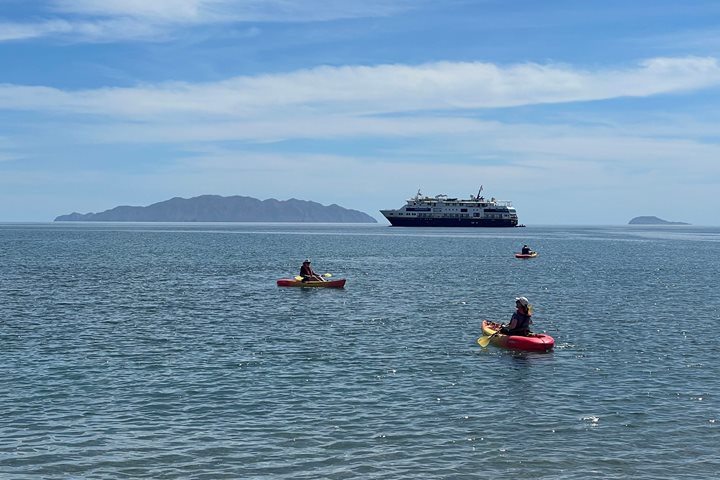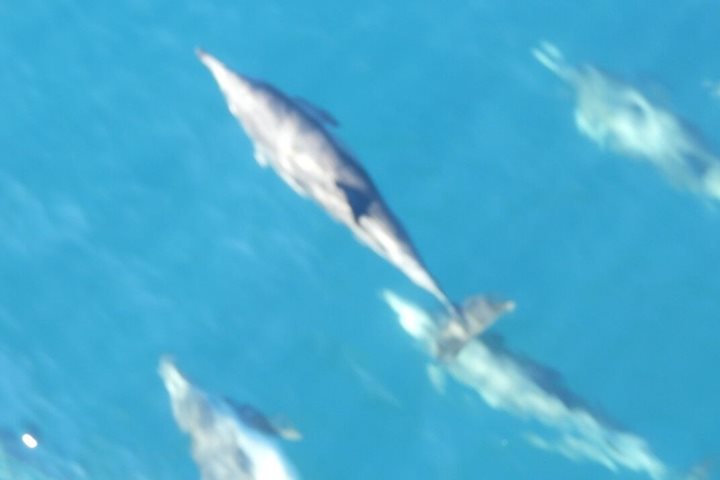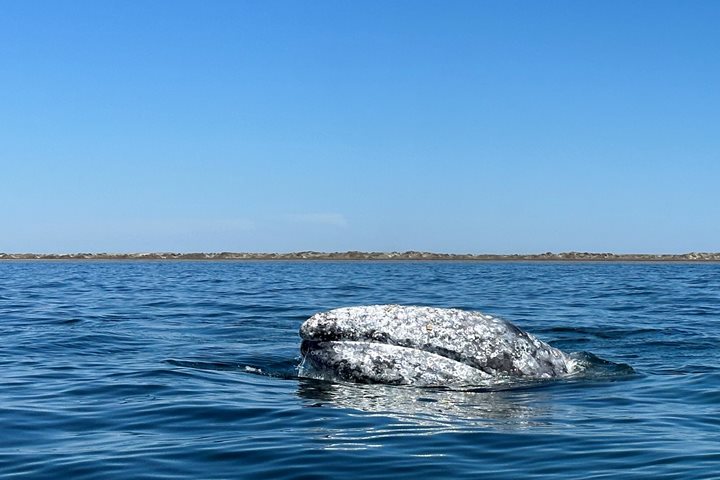Today our guests awoke among the gray whales (Eschrichtius robustus)! After an early breakfast, we joined local permitted guides in Zodiacs and headed for the southern shores of Magdalena Bay. As we traveled to our destination, we were greeted by coastal bottlenose dolphins (Tursiops truncates), breaching close to a sandy spit occupied by numerous Brandt’s cormorants (Phalacrocorax penicillatus).
As the wind picked up, brown pelicans (Pelecanus occidentalis) soared alongside us, occasionally plunging into the emerald waters in pursuit of fish. We soon saw dozens of gray whale spouts on the horizon. The gray whales come to Magdalena Bay to breed and have their caves in the warm, protected lagoon waters. The whales we encountered in the southern reaches of Magdalena Bay were courting or pregnant, with many individuals rolling in the surf and diving in unison. Some whales raised their heads (spyhopping) to view our guests, while others breached on the horizon. Soon many of these whales will make the perilous 10,000 mile journey north to their feeding grounds in the Arctic.
In the afternoon, we explored the Sonoran desert on guided walks in order to view the local flora and fauna.
Gray whales are true explorers, following their own journey. As visitors to Baja California Sur, Mexico, we are also explorers. I hope you all join us at Lindblad Expeditions/National Geographic again, in search of magnificent animals like the gray whales.
I leave you with a quote from Francis Parkman that summarizes why we explore:
“The wilderness, rough, harsh, and inexorable, has charms more potent in their seductive influence than all the lures of luxury and sloth, and often he on whom it has cast its magic finds no heart to dissolve the spell, and remains a wanderer and an Ishmaelite to the hour of his death.”







